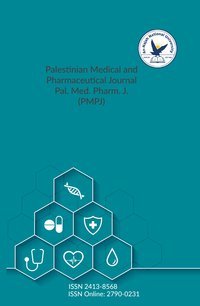Prevalence of Glycemic Control and Factors Associated With Increasing Levels of Hba1c Among A Sample of Palestinian Patients With Type 2 Diabetes Mellitus
Article info
2017-05-03
2017-05-25
82 - 92
Keywords
- Palestine
- Diabetes Mellitus
- Glycemic Control
- Multivariate Analysis
Abstract
Diabetes mellitus (DM) is an increasing health challenge. Control of blood glucose level, as measured by level of glycated hemoglobin (HbA1c), is used as an indicator of glycemic control and potential risk of diabetic complications. This study aimed to investigate the extent of glycemic control among type 2 diabetic patients and to determine factors associated with increasing levels of HbA1c.A total of 380 patients were interviewed using a questionnaire prepared for this cross – sectional study. The patients were recruited from a diabetic clinic in Nablus, Palestine. Clinical laboratory data and HbA1c values were obtained from medical files of the patients while demographic information were obtained through face-to-face interview. The participants had a mean ± standard deviation (SD) age of 60 ± 10 years. A total of 71 (18.7%) participants were less than 50 years of age. The participants had a mean body mass index (BMI) of 32.7± 6 Kg/m2 with more than two thirds were considered obese with a BMI of ≥ 30 Kg/m2. The studied patients have a mean ± SD of HbA1c of 8.3± 1.8. The median of HbA1c was 8.05 with interquartile range of (First quartile (Q1) = 6.93; Third quartile (Q3) = 9.5). The majority of studied patients (278; 73.2%) had HbA1c value above 7%. The mean ± SD healthcare index (HCI) of the studied patients was 4.29 ± 1.49. Univariate analysis showed that age (p<0.01), total cholesterol (p<0.01), low density lipoprotein (LDL) (p<0.01), high density lipoprotein (HDL) (p=0.028), HIC (p<0.01), and type of therapeutic regimen (p<0.01) were significantly correlated with HbA1c. Multivariate analysis indicated that younger age, lower HDL values, combination therapy with insulin were significantly associated with increasing levels of HbA1c.High proportion of patients recruited for this study had poor glycemic control. Younger age was associated with higher HbA1c values which necessitates urgent and immediate medical intervention at the primary healthcare level
Prevalence of Glycemic Control and Factors Associated With Increasing Levels of Hba1c Among A Sample of Palestinian Patients With Type 2 Diabetes Mellitus
المؤلفون:
معلومات المقال
2017-05-03
2017-05-25
82 - 92
الكلمات الإفتتاحية
- Palestine
- Diabetes Mellitus
- Glycemic Control
- Multivariate Analysis
الملخص
Diabetes mellitus (DM) is an increasing health challenge. Control of blood glucose level, as measured by level of glycated hemoglobin (HbA1c), is used as an indicator of glycemic control and potential risk of diabetic complications. This study aimed to investigate the extent of glycemic control among type 2 diabetic patients and to determine factors associated with increasing levels of HbA1c.A total of 380 patients were interviewed using a questionnaire prepared for this cross – sectional study. The patients were recruited from a diabetic clinic in Nablus, Palestine. Clinical laboratory data and HbA1c values were obtained from medical files of the patients while demographic information were obtained through face-to-face interview. The participants had a mean ± standard deviation (SD) age of 60 ± 10 years. A total of 71 (18.7%) participants were less than 50 years of age. The participants had a mean body mass index (BMI) of 32.7± 6 Kg/m2 with more than two thirds were considered obese with a BMI of ≥ 30 Kg/m2. The studied patients have a mean ± SD of HbA1c of 8.3± 1.8. The median of HbA1c was 8.05 with interquartile range of (First quartile (Q1) = 6.93; Third quartile (Q3) = 9.5). The majority of studied patients (278; 73.2%) had HbA1c value above 7%. The mean ± SD healthcare index (HCI) of the studied patients was 4.29 ± 1.49. Univariate analysis showed that age (p<0.01), total cholesterol (p<0.01), low density lipoprotein (LDL) (p<0.01), high density lipoprotein (HDL) (p=0.028), HIC (p<0.01), and type of therapeutic regimen (p<0.01) were significantly correlated with HbA1c. Multivariate analysis indicated that younger age, lower HDL values, combination therapy with insulin were significantly associated with increasing levels of HbA1c.High proportion of patients recruited for this study had poor glycemic control. Younger age was associated with higher HbA1c values which necessitates urgent and immediate medical intervention at the primary healthcare level
An-Najah National University
Nablus, Palestine
Nablus, Palestine
- P.O. Box
- 7, 707
- Fax
- (970)(9)2345982
- Tel.
- (970)(9)2345560
- (970)(9)2345113/5/6/7-Ext. 2628
- [email protected]
- EIC
- Prof. Ismail Warad
